1971: joining the space race
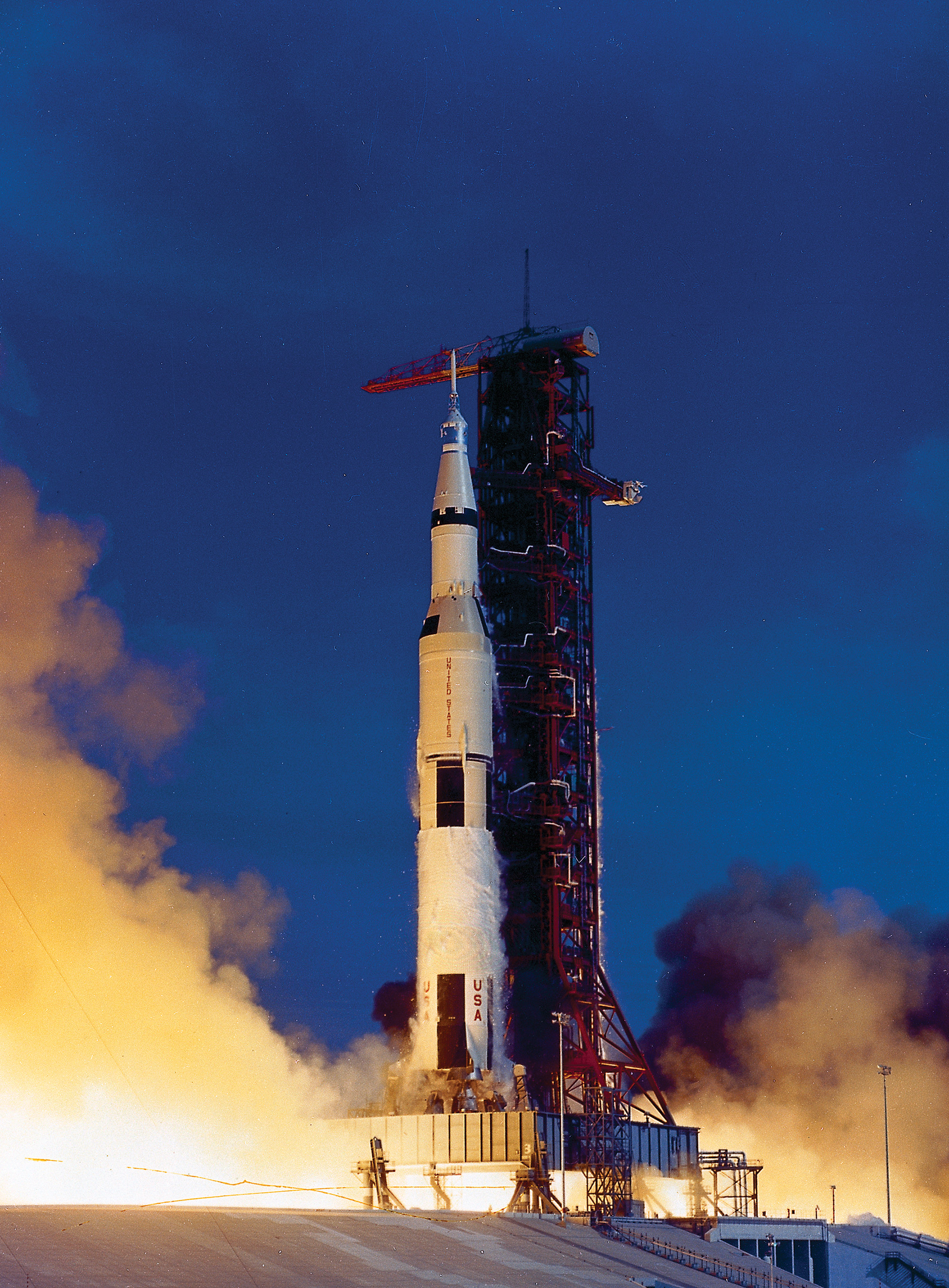
In January 1971, Nikon agreed a contract in response to a request from NASA. This was to supply cameras to record the Apollo 15 mission to the lunar surface to be launched that year, and for the Apollo 17 mission planned for the following year. The Photomic FTN was selected as the base for the development.
NASA gave Nikon designated specifications to ensure that these cameras would function correctly in the extreme environments of space. These included use of NASA-specified materials such as lubricants and high shock-absorption characteristics, and to prevent possible problems due to the reflection of sunlight, the exterior of the devices were to be matte black. The 55mm f/1.2 lenses that were to be mounted to the cameras also had to be finished in matte black.
By June, all of these criteria had been satisfied and the company supplied NASA with nine cameras. These products were heading for the moon the following month with the launch of Apollo 15. The NASA-specification Nikon Photomic FTN was also later adopted as a special camera system used in Skylab, a mission which would see three astronauts living in space over a prolonged period.
The cameras were designed to photograph the Earth’s ozone layer and Auroras.
Nikon used the space programme to pioneer new technologies, and in 1991 it constructed a DSLR for the Space Shuttle. Known as the Nikon NASA F4 electronic still camera, it featured a digital back on an F4 body, a separate processor and a laptop computer mounted on a playback-downlink unit (PDU). Compact and bijou it wasn’t!
1971: Nikon F2
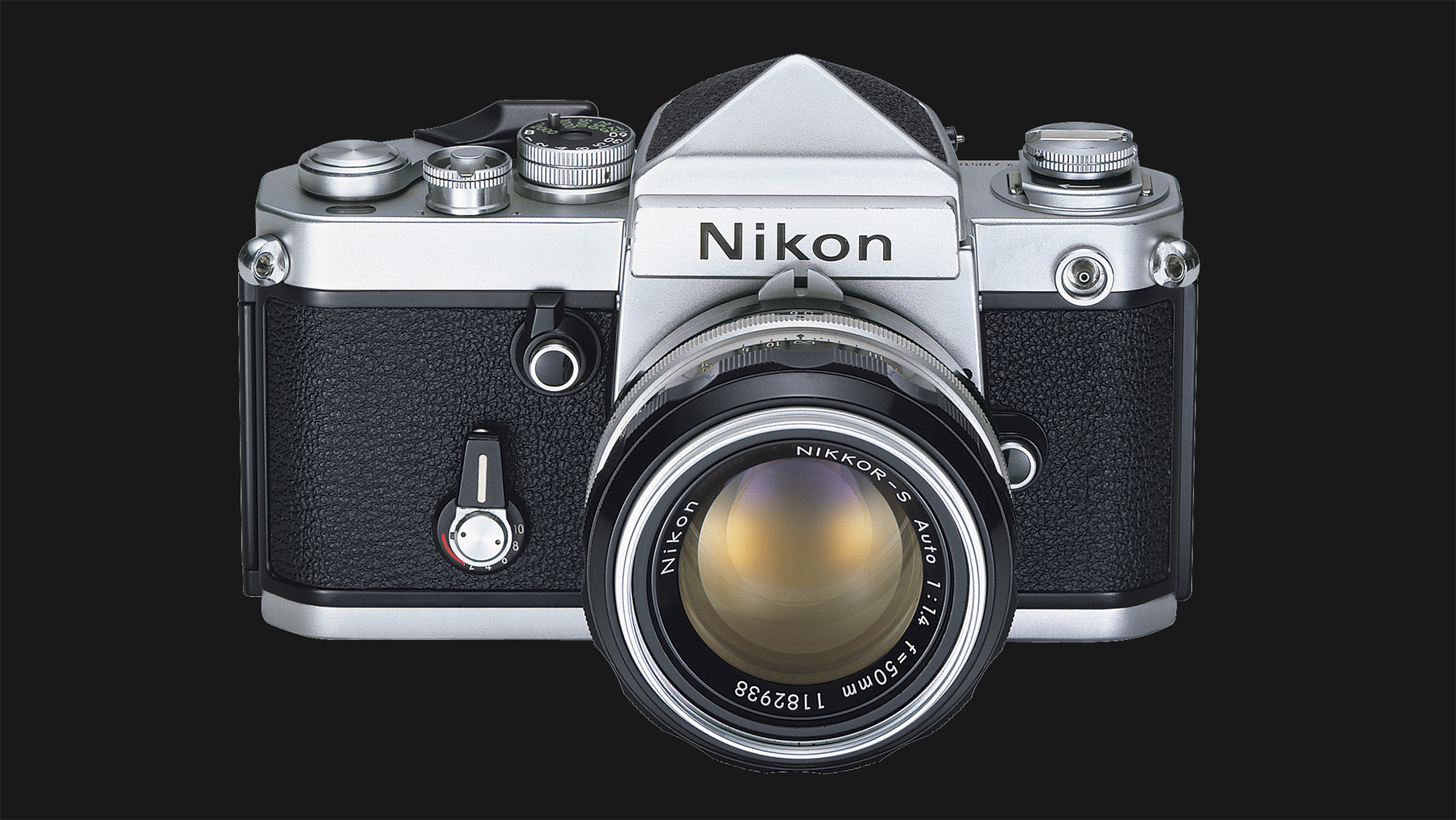
Although the Nikon F evolved through the 1960s, it wasn’t until 1971 that a ‘true’ successor to the mainline camera arrived. The Nikon F2 was designed with four requirements in mind: it had to maintain the highest possible quality, offer easier and automatic operation, be faster to shoot
with and, crucially, maintain the ‘F’-system compatibility with interchangeable lenses and accessories.
Get daily insight, inspiration and deals in your inbox
Sign up for breaking news, reviews, opinion, top tech deals, and more.
The camera featured improved functionality and refined details such as a reliable 1/2,000 sec high-speed shutter to satisfy professional photographers, 1/80 sec flash sync (the original F offers 1/60 sec), a 2-10 second slow shutter that utilised a self-timer mechanism, a built-in ready light, a large-size mirror, hinged rear-lid and a more convenient shutter button position.
1972: Nikomat (Nikkormat) EL

The Nikomat (Nikkormat outside of Japan) was developed with serious enthusiasts in mind, and while the EL wasn’t the first SLR camera to feature a built-in auto-exposure mechanism (that honour went to the Nikon AUTO 35), it was the first-generation electronic camera from Nikon to offer aperture-priority auto-exposure with exposure memory lock.
1977: NOCT-Nikkor 58mm f/1.2
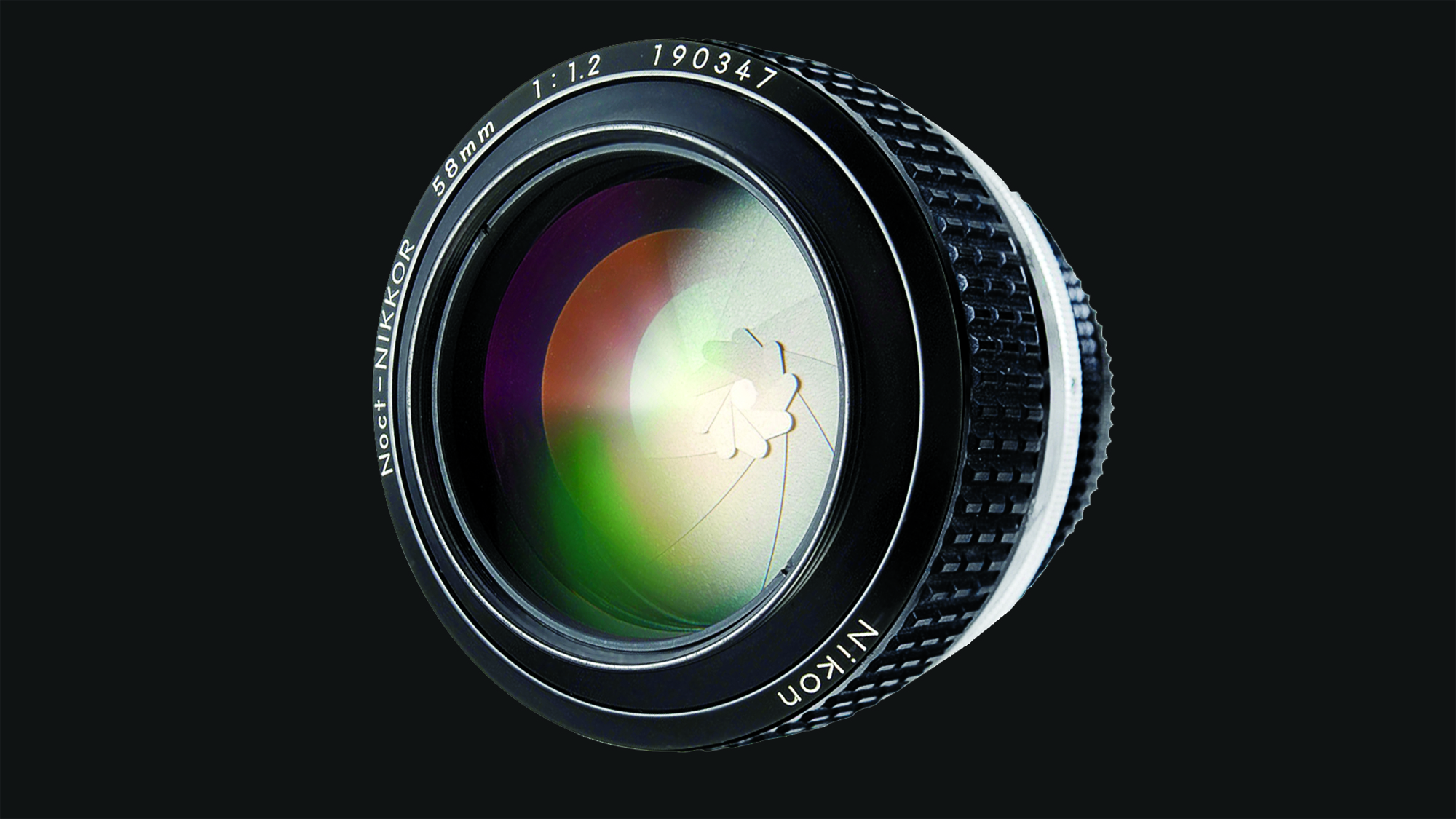
Nikon’s reputation for producing high-quality lenses has been enhanced over the years by an ability to manufacture specialist optics that few other lens makers would consider. One such lens was the 58mm f/1.2 Noct-NIKKOR AI.
One of the rarest of all NIKKORs, it was designed for handheld low-light, night-time and astronomical shooting (‘Noct’ is an abbreviation of nocturnal). The Noct-NIKKOR was made for use at maximum aperture.
The f/1.2 aperture meant it was the fastest NIKKOR lens ever made (along with the 50mm f/1.2 AI and 55mm f/1.2 NIKKORs). More significant was the optical performance: at f/1.2, image sharpness and contrast at the centre were as good as other standard lenses when stopped down. The key to this was a hand-polished aspherical coating on the front lens element, which also contributed to a smoothly defocused bokeh.
1980: Nikon F3
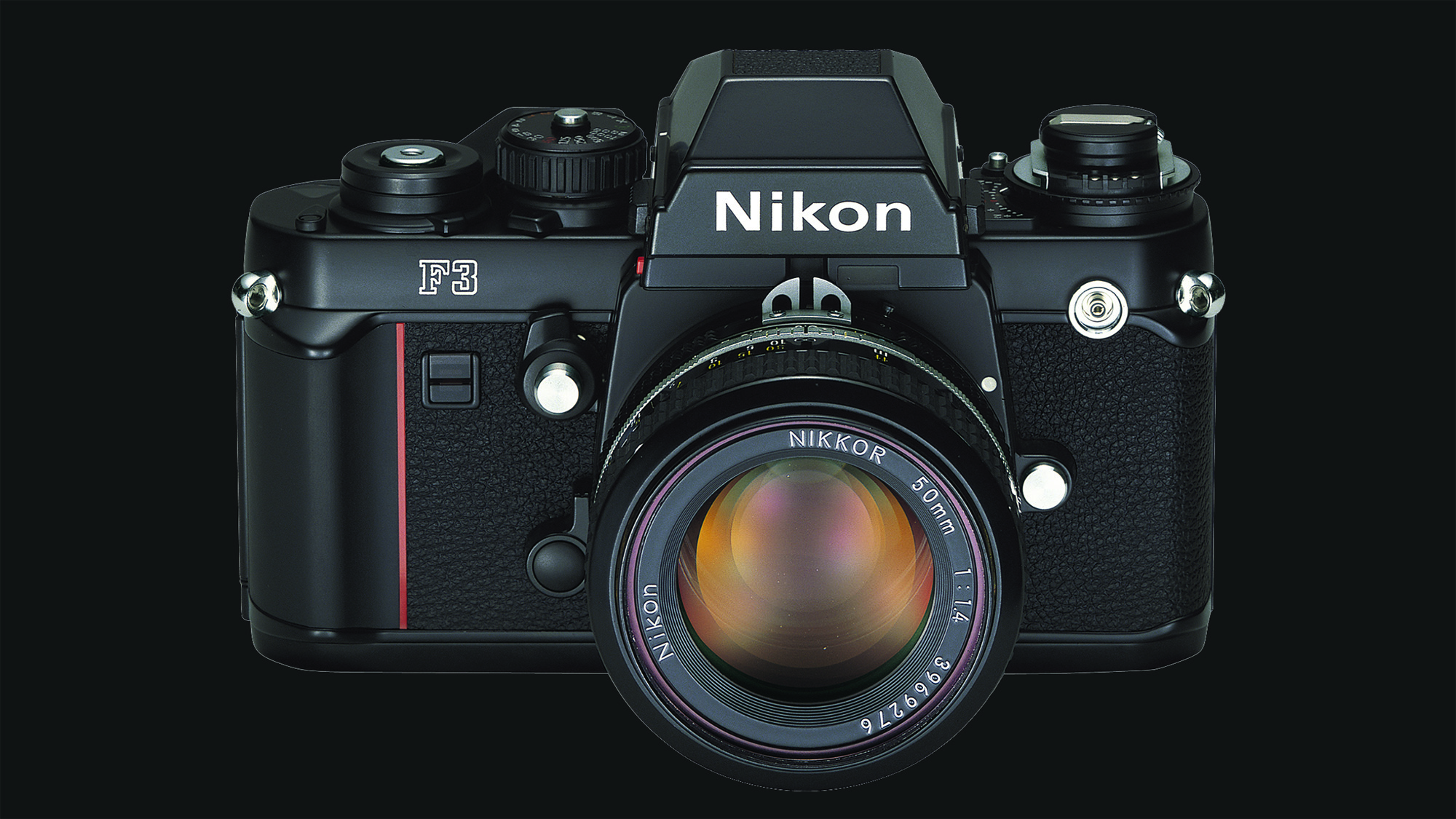
As a flagship model, the Nikon F3 adopted brand-new electronic technologies of the day, such as the first electronic shutter control and aperture priority auto-exposure control mechanism. The camera also featured new functions such as an LCD viewfinder display, TTL sensor located at the bottom of the camera mirror box, and Speedlight TTL light control.
But when Nikon decided to create a mark of distinction for its new camera, it called in one of Italy’s greatest product designers, Giorgetto Giugiaro, whose product design was honed in the car industry on the likes of the Volkswagen Golf, Audi 80 and Lotus Esprit. The red line on the F3 was important because it marked the first time that colour had been added to the exterior of a pro SLR. Giugiaro also added a red stripe to the company’s first autofocus compact, the L35AF, when it launched in 1983. An identity was born.
“The red line was really a style point to add a bit of flair to a professional camera that had been all in black,” Giugiaro said in a 2007 interview. “It’s natural, however, for something that is functional to evolve into something beautiful.” The F3’s red line changed into a thicker stripe on the F4, and then into an elongated ellipse on the F5. By 2003 it had been replaced by a red triangle on the D2H. The creative process continues with the D4 and D800, on which the triangle has been flattened to resemble a red brow beneath the sub-command dial.
1988: Nippon Kogaku K.K. becomes Nikon
On 1 April 1988 the Nippon Kogaku K.K. company restarted as the Nikon Corporation. At the time, the Nikon brand already possessed an excellent reputation in a number of fields. The name was changed in order to make it easier to expand as an international company, and to take advantage of its reputation for reliability.
1988: Nikon F4
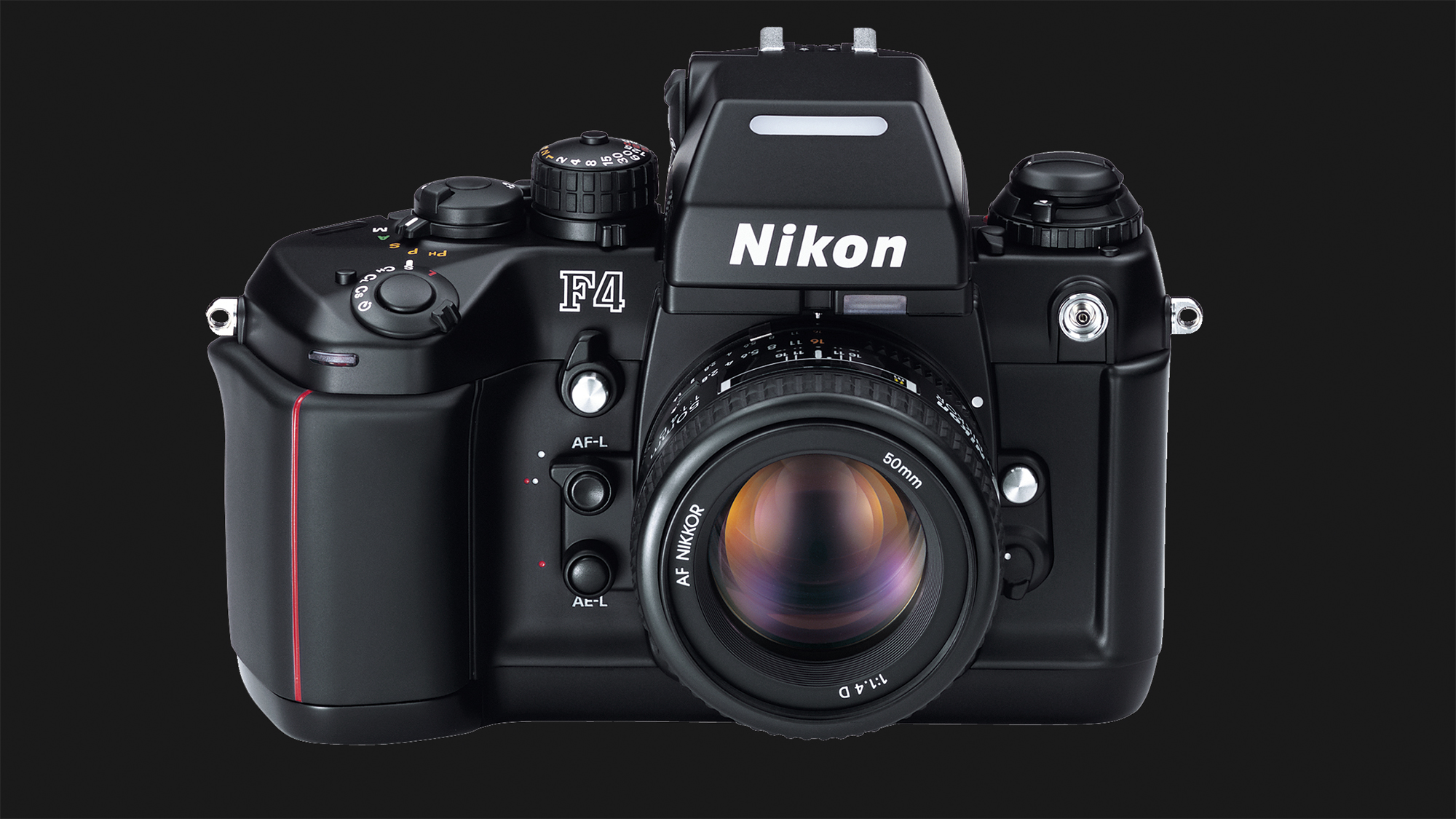
Less than five years after the launch of the F3, the rapid development of camera technology meant Nikon began planning a replacement for its flagship camera.
Autofocus was of primary concern because body-integral AF systems were in their infancy and many pros remained unconvinced about relying on AF. Nikon knew that the success of the F4 depended on it possessing the most advanced and dependable body-integral AF system of the time.
By the launch date of September 1988, the F4 had won over doubting pros by including focus tracking for moving subjects – the first Nikon to do so – and being the first pro Nikon body to include a built-in winder.
Giorgetto Giugiaro was hired again, and his design emphasised the camera’s level of automation by replacing cranks and levers with buttons and dials.